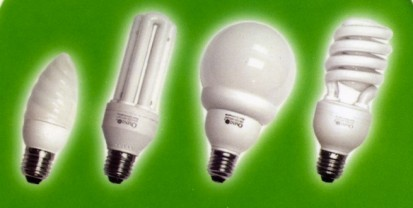Switching from incandescent light bulbs to compact fluorescent lamps (CFLs) is a bright idea to save energy and money. Because each bulb has small amounts of mercury, follow these suggestions from the Alliance to Save Energy to use and dispose of these energy-efficient options properly.

Use care when handling compact fluorescent lamps, which contain mercury.
A CFL costs about 75 percent less money to run, pays for itself in about six months and lasts up to 10 years. Each bulb contains trace amounts of mercury -- about four milligrams (mg) in each bulb. That's an infinitesimal amount compared with old thermometers, which contain about 500 mg of mercury, according to the Environmental Protection Agency.
Because electricity use is the main source of mercury emissions in the United States, the EPA says CFLs actually reduce the total amount of mercury in the environment because they use less electricity than traditional bulbs.
When CFLs are intact and in use, they release absolutely no mercury. However, there are suggested rules for management, cleaning and recycling.
To manage a CFL:
- Turn it off before you handle a bulb. Although a working CFL is not nearly as hot as a traditional incandescent, it needs a bit of time to cool, especially if it has been on for a long period.
- Hold it carefully to avoid breaking a CFL. The EPA suggests holding the plastic or ceramic base of the bulb instead of the glass tubing.
- Don't twist too tightly. Gently screw in CFLs until they are snug.
- CFLs should not be put in open play spaces or locations in your home where children are likely to bump into and smash them.
If a CFL breaks:
- Send people and pets out of the room.
- Air out the room for 5-10 minutes by opening windows or doors. At the same time, shut off any central air systems because they circulate air throughout a home.
- Collect all broken glass and visible powder. Place the materials in a sealable container. Do not use a vacuum cleaner because it can stir up the mercury and trap some within the vacuum. Instead, use duct tape or another large width tape to pick up small pieces and powder.
- Double-check the area you were cleaning and put the bulb debris outdoors until you can recycle the cleaned-up materials.
- Visit local retailers such as Lowe's and Home Depot that have in-store recycling





